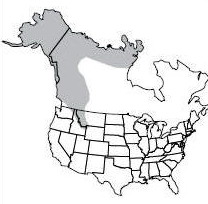Repellents for white-tailed deer are best suited for use in orchards, gardens, and on ornamental plants. High cost, limitations on use, and variable effectiveness make most repellents impractical on row crops, pastures, or other large areas. Success with repellents is measured in the reduction, not total elimination, of deer damage. Continue reading Deer Repellents
Trapping Coyotes
There are many effective methods for trapping coyotes, and success can be enhanced by considering several key points. Coyotes learn from past events that were unpleasant or frightening, and they often avoid such events in the future. In spring and summer, most coyotes limit their movements to a small area, but in late summer, fall, and winter they may roam over a larger area.
Coyotes follow regular paths and crossways, and they prefer high hills or knolls from which they can view the terrain. They establish regular scent posts along their paths, and they depend on their ears, nose, and eyes to sense danger. Continue reading Trapping Coyotes
Legal Status of Badgers
In some states, badgers are classified as furbearers and protected by regulated trapping seasons, while in other states they receive no legal protection. Contact your state wildlife agency before conducting lethal control of badgers.
Grizzly Bear Range
The brown bears of North America have lost considerable range, and are currently restricted to western Canada, Alaska, and the northwestern United States. Their populations are considered secure in Canada and Alaska, but have declined significantly in the lower 48 states. Before settlement, 100,000 brown bears may have ranged south of Canada onto the Great Plains along stream systems such as the Missouri River, and in isolated, small mountain ranges such as the Black Hills of South Dakota. They were scattered rather thinly in Mexico and in the southwestern United States, but may have numbered about 10,000 in California, occupying the broad, rich valleys as well as the mountains. Continue reading Grizzly Bear Range
Live Capture to Control Deer Numbers
In special cases, such as city parks, refuges, or suburban neighborhoods, it may be necessary or desirable to capture white-tailed deer alive and move them to other areas. Deer can be captured safely and economicallywith rocket nets, drop-door box traps, or tranquilizer guns, but these techniques are expensive, time-consuming, and require the expertise of professional wildlife biologists. Continue reading Live Capture to Control Deer Numbers
Deer Biology and Behavior
Breeding occurs from October to January depending on latitude. Peak activity is in November. Does are in heat for 24 hours every 28 days for 2 to 3 consecutive cycles. One buck may inseminate several does. No pairing takes place. Most does breed during their second fall, although on good range up to 30% of the doe fawns (6 months old) will be bred. Gestation is about 202 days. The peak of fawn drop is in May or June. Most reproducing fawns give birth to a single fawn, but adult does typically bear twin fawns. Reproductive potential is very sensitive to nutrition. Continue reading Deer Biology and Behavior
Economic Impact of Deer Damage
A national survey conducted by USDA’s National Agricultural Statistics Service in 1992 identified deer damage as the most widespread form of wildlife damage. Forty percent of the farmers reporting had experienced deer damage. No estimate exists of nationwide annual crop losses to deer, but damage estimates have been made for some states. Continue reading Economic Impact of Deer Damage
